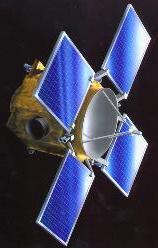
|
Progress report: 02Jul99
Task:
Find the minimum number of 5 to 5.5 hour time periods necessary in the nominal mass case to cover the majority of the surface of Eros at least once.
Processes:
We started by dividing the available picture-taking time into 5 or 5.5 hour periods (much of the time in the 100 km orbit is given to the NLR or must be set aside for the downlink to earth). We systematically removed one period and made full plate models (minus that one time period) - so there were twenty plate models altogether - and compared each model with the model made using ALL of the time periods (that is, ALL of the available time).
Then we made plate models using the MINIMUM number of time periods: Emily used five, I used three. We tried to get the best coverage of the asteroid we could using only three or five 5/5.5 hour time periods.
Findings:
When we removed only one 5/5.5 hour time period, we usually found that there was little or virtually NO difference between a plate model in which one time period had been removed, and the full plate model (there is a descriptive file located at hermes.earth.nwu.edu:/work2/jedmonds/orbit/100k/lon_scans/minus_orbits/missing_orbit.README). However, in the case in which only three 5/5.5 hour time periods were used, the coverage was minimal and quite unacceptable (there is a descriptive file located at hermes.earth.nwu.edu:/work2/jedmonds/orbit/100k/lon_scans/min_orbits/README). Much of the models made using five 5/5.5 hour time periods were also unacceptable, however, one seemed to be usable.
(Jessica Edmonds and Emily Peters, 7-2-99)
/NEAR/SEQ/7-2-99.html
|

